#Berlin Rebels
Text

Breaking the silence! Stop the bombs! Stop the war! Stop occupation! Against the walls!
Against all forms of opeession! Against Hate!
.
Wenn wir free Palestine sagen, sagen wir: Freiheit und Gleichheit und gerechter Frieden für ALLE Menschen die dort leben. Frei von Unterdrückung, Frei von Gewalt, frei von korrupten Machthabern und durchgeknallten Milizen. Frei von Rassismus und Antisemitismus und frei von patriachalen Strukturen!Frei von Militärkontrollen, Mauern, Chackpoints und einem zwei-Klassen System. Frei von Besatzung und Krieg! Die Mehrheit der werktätigen Menschen auf allen Seiten will Friede, Gleichheit und ein Leben in Würde, das ist übrigens überall auf der Welt so. Und für die, die uns hier die Worte im Mund verdrehen wollen oder absichtlich Falsches in unser Plakat dichten wollen: Kommt mal klar - Free Palestine heißt nicht und niemals „ein Land ohne Jüdinnen und Juden“ sondern gleiche Rechte, gerechter Frieden, Demokratie und Teilhabe für Alle! Und wir stehen bedingungslos an der Seite der Menschen die sich für unteilbare Gerechtigkeit im nahen Osten einsetzen, scheissegal welche Religion sie haben. Das heißt Free Palestine! Eine Auseinandersetzung mit der europäischen Kolonialgesschichte ist dabei unabdingbar!
Wer allerdings meint Kritik an der Politik des Staates Israels oder seine Wut auf die Ungerechtigkeiten und den Krieg dadurch äußern zu müssen, jüdische Menschen zu bedrohen oder seinen Protest vor jüdische Einrichtungen zu tragen ist auch unser Feind! Basta! Und wer meint sich bedingungslos an die Seite einer faschistischen Regierung und ihrer Kriegsmaschine stellen zu müssen, hat seine Entscheidung getroffen. Wir stehen an der Seite der Unterdrückten und Ausgebeuteten. Von gerechtem Frieden in der derzeitigen Situation zu sprechen scheint völlig naiv, schon klar, aber das ist ja alles was wir machen - völlig naiv. Wir wollen auch libertäten Kommunismus statt Turbo-Kapitalismus im Endstadium hier zu Lande und zwar jetzt. So naiv sind wir .
:
Fight Fascism Everywhere! Stop the war on Gaza! Stop the violence in the westbank! Kisses and Hugh’s to all our friends in Haifa, Tel Aviv, Jaffa, Jerusalem, Ramallah, Bethlehem, Herbron we where lucky to meet on our last trip! We are with you and your people!
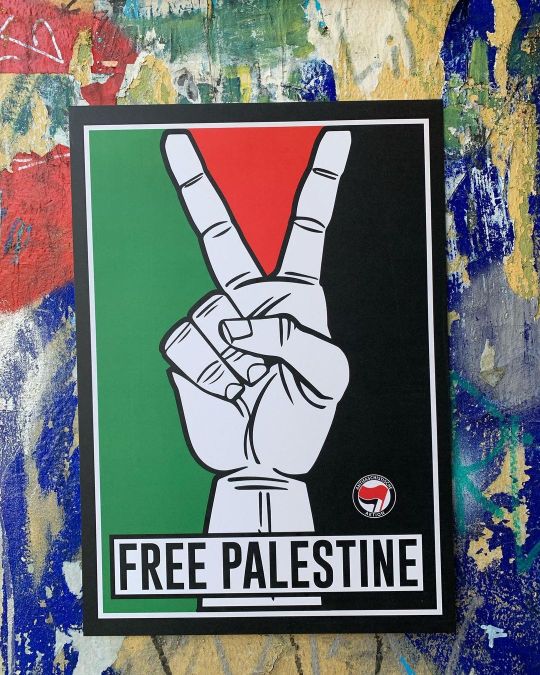
www.disorder-berlin.de
#plakat#poster#left side#posters#punk#disorder rebel store#punk shop#berlin kreuzberg#plakate#revolution#free palestine#free gaza#palestine#gaza#stop the war#stop bombs#antifa#anti war#antifascismo#peace#punk berlin
11 notes
·
View notes
Photo

3:58 PM EDT March 30, 2024:
Black Rebel Motorcycle Club - "Berlin"
From the album Baby 81
(April 27, 2007)
Last song scrobbled from iTunes at Last.fm
3 notes
·
View notes
Text

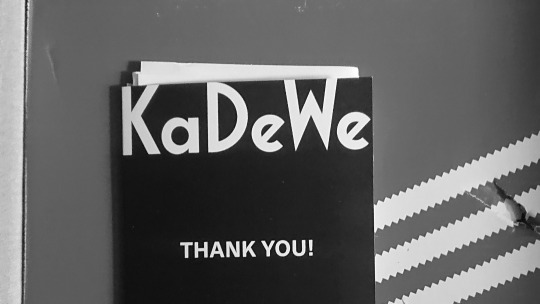
Some hot stuff from berlin🔥😎🖤 wishing you all a happy weekend.
#adidas#sneakers#fashionlover#fashion#musiclover#weekend#rebel girl#amazing#berlin#high tops#Spotify
4 notes
·
View notes
Text
So I'm in the mood to overshare. Y'all know about the Berlin Wall? I recently got obsessed with the way people just came together from both sides to break it down and on researching, found out about this guy who actually ran a tank into the wall a few years prior. Like, how cool is that? "Your bestie's grandpa owned a hotel? Well, I ran a tank into the Berlin Wall."
And yesterday I was talking about it with my 70yo Indian grandmother who remembers watching it in the news back then. We ended up watching three Ted-Ed History videos and having a heated discussion on Napoleon Bonaparte.
Lesson of the day: Never a greater day to be a history nerd.
Alternative lesson of the day: Run a tank through walls
#berlin wall#fall of the Berlin wall#just desi things#ted ed#me and gran being history nerds#run a tank through walls peeps#tank man#rebel rebel#heroes#david bowie#didn't he write heroes about the wall?#Ted Ed turns you into a history nerd#just me rambling#needed to get this out of my system#board exams#like are you fucking kidding me#they don't exist for me#idk what tags to use#oranges#because I'm a fruit who loves fruits#desi academia
3 notes
·
View notes
Text
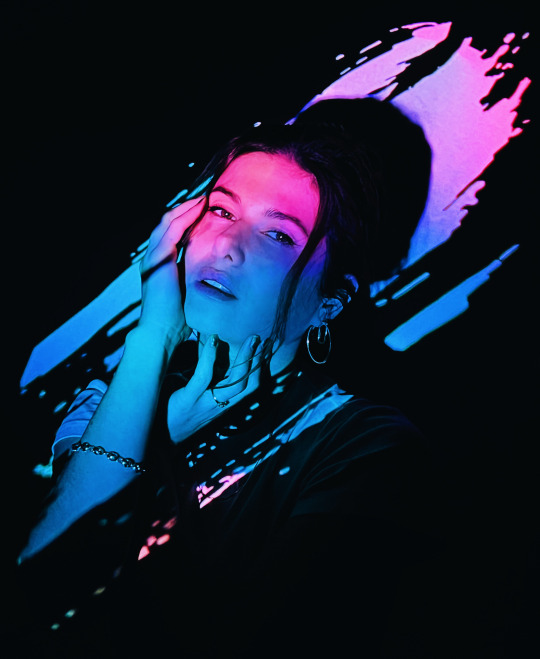
02 - Imaginary Portal Projection Portraits - Sascha
#imaginary#portal#projection#art#photography#experiment#cool#colorful#cyberpunk#rebel#girl#art school#project#projectionmapping#inspiration#berlin#portrait#mood#aesthetic#artists on tumblr#electric#artoftheday#artschool
2 notes
·
View notes
Photo
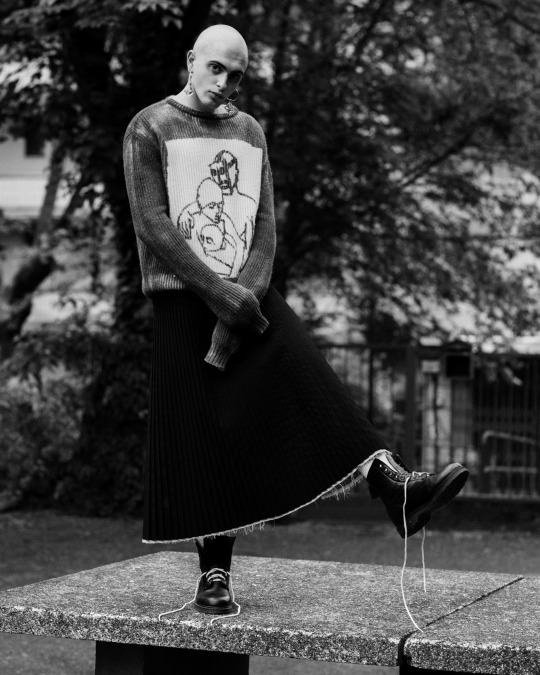
Alton by Simone Paccini & Francesco Mautone for STOVE MAGAZINE Milano
#stovemagazine#simonepaccini#fashioneditorial#urbanportrait#urban#streetwear#punk#berlin#youth#rebel#magazine#fashion magazine
3 notes
·
View notes
Text
The Forgotten History of the World’s First Transgender Clinic
I finished the first round of edits on my nonfiction history of trans rights today. It will publish with Norton in 2025, but I decided, because I feel so much of my community is here, to provide a bit of the introduction.
[begin sample]
The Institute for Sexual Sciences had offered safe haven to homosexuals and those we today consider transgender for nearly two decades. It had been built on scientific and humanitarian principles established at the end of the 19th century and which blossomed into the sexology of the early 20th. Founded by Magnus Hirschfeld, a Jewish homosexual, the Institute supported tolerance, feminism, diversity, and science. As a result, it became a chief target for Nazi destruction: “It is our pride,” they declared, to strike a blow against the Institute. As for Magnus Hirschfeld, Hitler would label him the “most dangerous Jew in Germany.”6 It was his face Hitler put on his antisemitic propaganda; his likeness that became a target; his bust committed to the flames on the Opernplatz. You have seen the images. You have watched the towering inferno that roared into the night. The burning of Hirschfeld’s library has been immortalized on film reels and in photographs, representative of the Nazi imperative, symbolic of all they would destroy. Yet few remember what they were burning—or why.
Magnus Hirschfeld had built his Institute on powerful ideas, yet in their infancy: that sex and gender characteristics existed upon a vast spectrum, that people could be born this way, and that, as with any other
diversity of nature, these identities should be accepted. He would call them Intermediaries.
Intermediaries carried no stigma and no shame; these sexual and Gender nonconformists had a right to live, a right to thrive. They also had a right to joy. Science would lead the way, but this history unfolds as an interwar thriller—patients and physicians risking their lives to be seen and heard even as Hitler began his rise to power. Many weren’t famous; their lives haven’t been celebrated in fiction or film. Born into a late-nineteenth-century world steeped in the “deep anxieties of men about the shifting work, social roles, and power of men over women,” they came into her own just as sexual science entered the crosshairs of prejudice and hate. The Institute’s own community faced abuse, blackmail, and political machinations; they responded with secret publishing campaigns, leaflet drops, pro-homosexual propaganda, and alignments with rebel factions of Berlin’s literati. They also developed groundbreaking gender affirmation surgeries and the first hormone cocktail for supportive gender therapy.
Nothing like the Institute for Sexual Sciences had ever existed before it opened its doors—and despite a hundred years of progress, there has been nothing like it since. Retrieving this tale has been an exercise in pursuing history at its edges and fringes, in ephemera and letters, in medal texts, in translations. Understanding why it became such a target for hatred tells us everything about our present moment, about a world that has not made peace with difference, that still refuses the light of scientific evidence most especially as it concerns sexual and reproductive rights.
[end sample]
I wanted to add a note here: so many people have come together to make this possible. Like Ralf Dose of the Magnus-Hirschfeld-Gesellschaft (Magnus Hirschfeld Archive), Berlin, and Erin Reed, American journalist and transgender rights activist—Katie Sutton, Heike Bauer. I am also deeply indebted to historian, filmmaker and formative theorist Susan Stryker for
her feedback, scholarship, and encouragement all along the way. And Laura Helmuth, editor of Scientific American, whose enthusiasm for a short article helped bring the book into being. So many LGBTQ+ historians, archivists, librarians, and activists made the work possible, that its publication testifies to the power of the queer community and its dedication to preserving and celebrating history. But I ALSO want to mention you, folks here on tumblr who have watched and encouraged and supported over the 18 months it took to write it (among other books and projects). @neil-gaiman has been especially wonderful, and @always-coffee too: thank you.
The support of this community has been important as I’ve faced backlash in other quarters. Thank you, all.
NOTE: they are attempting to rebuild the lost library, and you can help: https://magnus-hirschfeld.de/archivzentrum/archive-center/
#support trans rights#trans history#trans#transgender#trans woman#trans rights#trans representation#interwar period#weimar#equality#autistic author#nonbinary#lgbtq representation#lgbtqia#book news#book#books#new books#thank you#neil gaiman#for your support
2K notes
·
View notes
Video
COVERGIRL by tabea blumenschein
Via Flickr:
Tabea Blumenschein - the eternal Queen of Berlin on the cover of 'the top 100 most important female berliners in history' word!
#tabeablumenschein#covergirl#icon#artist#paintress#actress#filmmaker#costumedesigner#singer#heartbreaker#rebel#diva#best#dressed#berliner#zeitung#magazin#top#100#most#important#females#history#townesarchive#flickr
0 notes
Text
kristen and cassandra: prophet, apostate, saint, god
(you can find the majority under the cut - this is quite long)
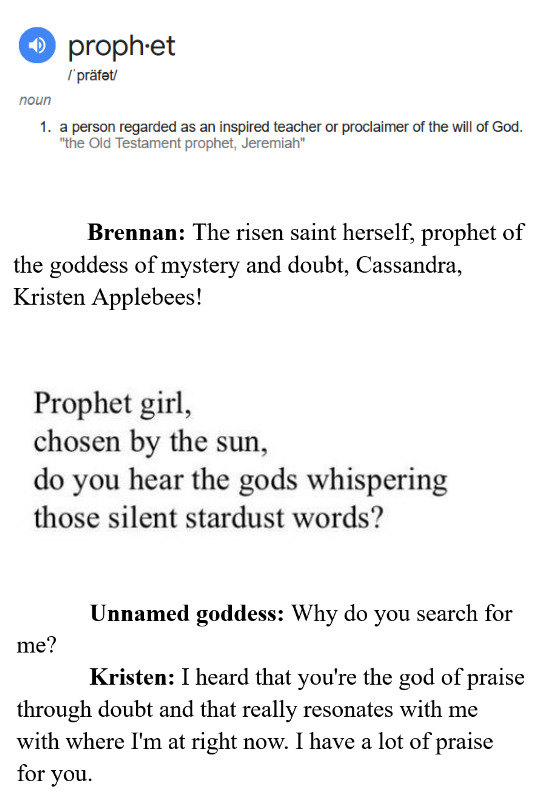
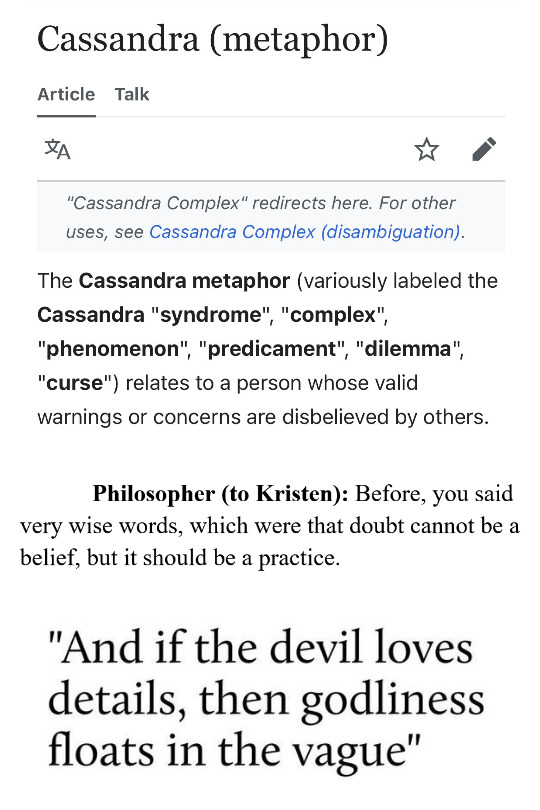

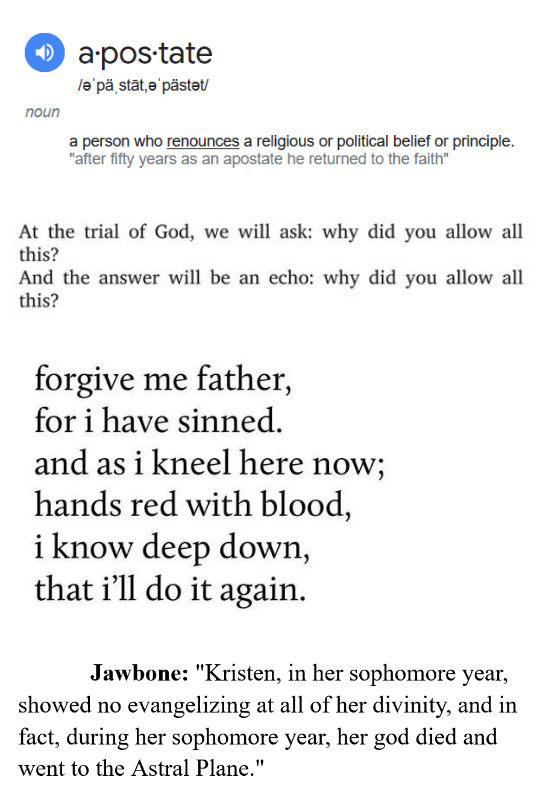
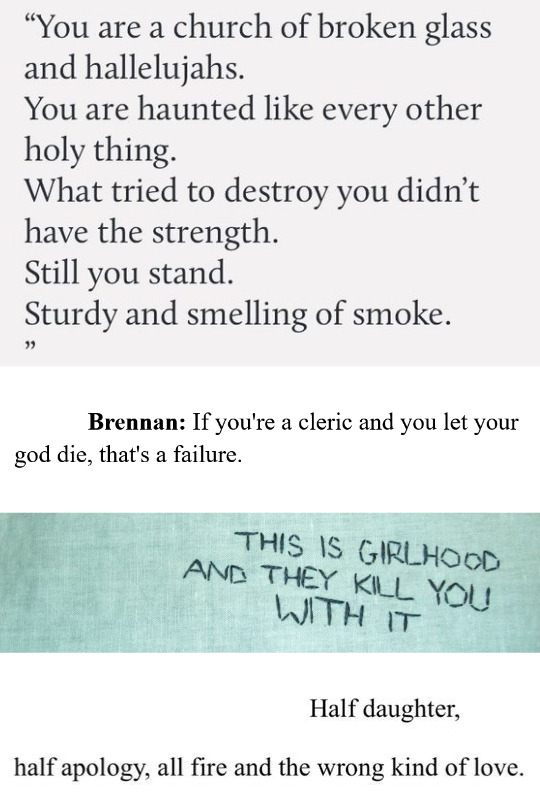
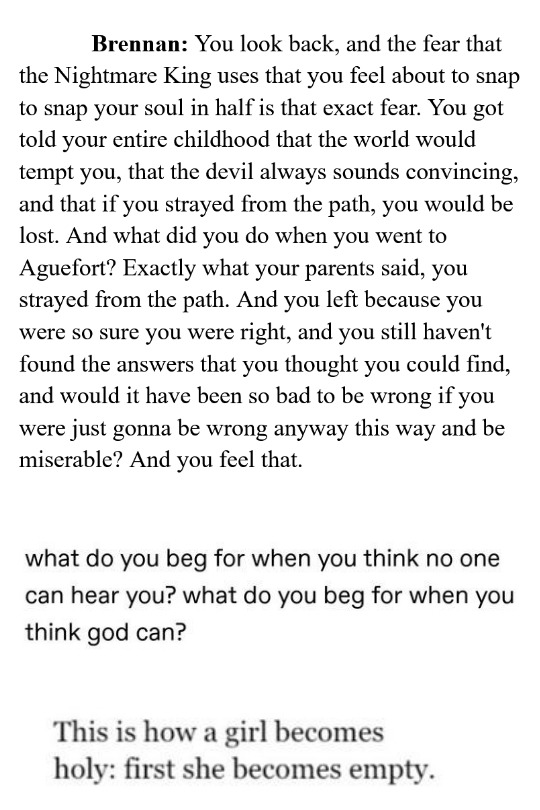
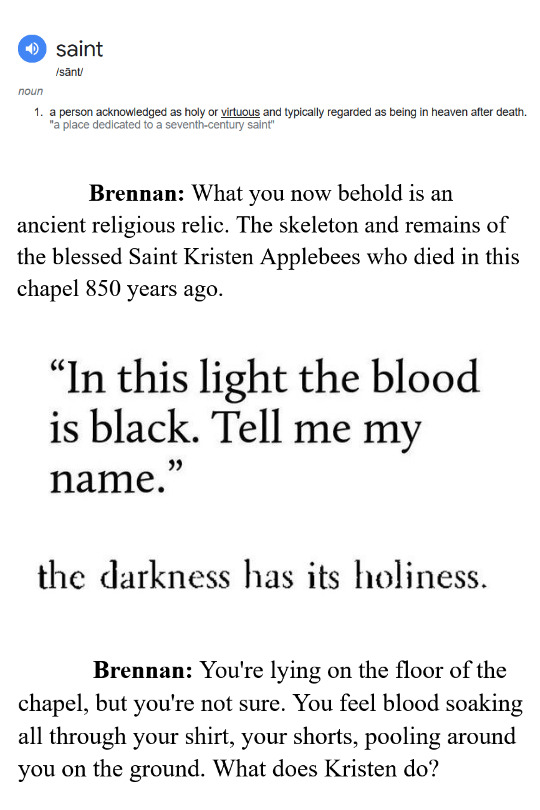

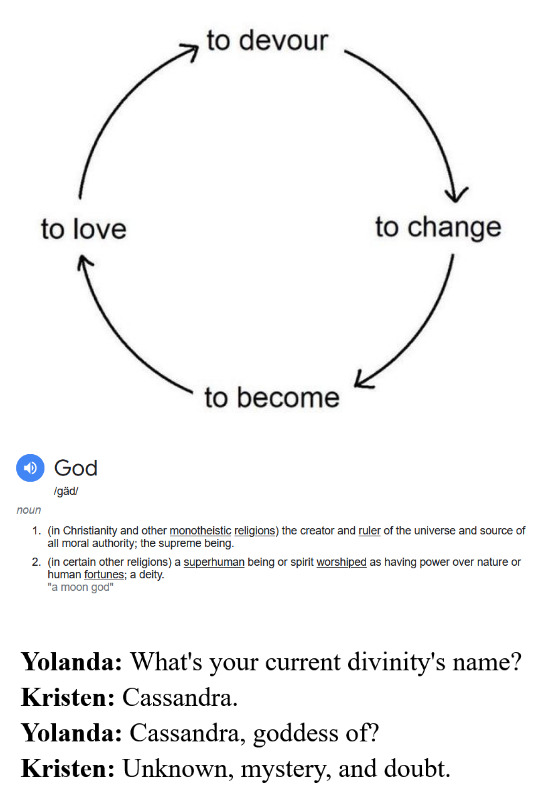



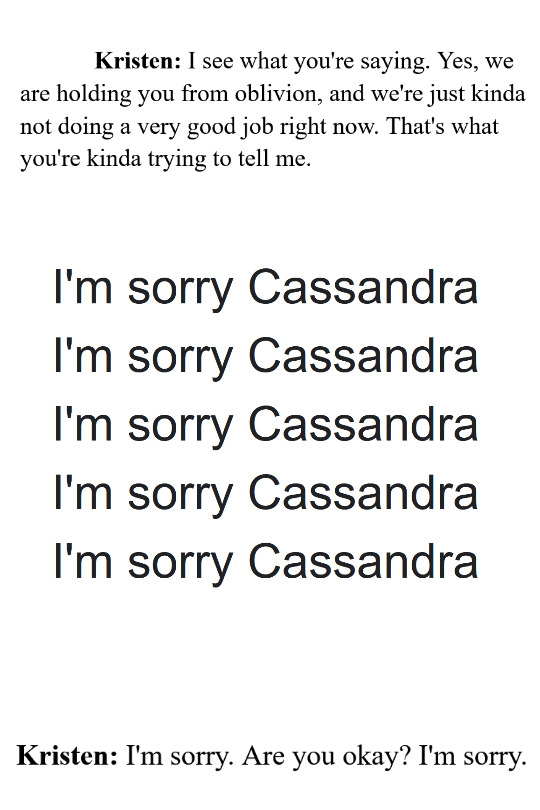
Oxford Languages // (could not find) // Wikipedia // Berlin Syndrome, Sparky Deathcap // the hero who couldn't save anyone, m.a.w // Prayer for the Newly Damned, Ocean Vuong // Deaf Republic, Ilya Kaminsky // confessions, k.a. // Little Bird, Clementine von Radics // (could not find) // If My Body Could Speak, Blythe Baird // (could not find) // Prelude, Brynne Rebele-Henry // Crossing the Water, Sylvia Plath // (could not find) // Hell Followed With Us, Andrew Joseph White // Half Hanged Mary, Margaret Atwood // Power Politics: Poems, Margaret Atwood // (could not find) // Rachel Wolchin // Journal of a Novel: The East of Eden Letters, John Steinbeck // Editor's Pages: The Long and Short of It, Richard Siken // Not Forgotten, Israel Houghton // (could not find) // Churching, Kristin Chang // I'm Your Man, Mitski // Cassandra, ABBA // Dimension 20 LIVE presents Fantasy High: Sophomore Year (2019) // Dimension 20: Fantasy High: Junior Year (2024)
#once again i prove myself incapable of keeping these things to a reasonable length#this web weave is slightly shorter than my tula one but only slightly#vaguely inspired by my kristen-is-a-god post but probably doesn't have to be read that way#kristen applebees#cassandra fantasy high#fantasy high#fantasy high sophomore year#fantasy high junior year#fhjy#d20#dimension 20#web weaving
292 notes
·
View notes
Text
The Romanticism of One Piece

I’m always amazed by how Oda has managed to stay thematically consistent for more than two decades while writing a thousand plus chapter epic about silly pirates having fun chasing their dreams. One Piece, at its core, is about the dawn of a romantic adventure, and its been that way since volume one, chapter one.
But romance is one of those terms whose meaning as shifted over the years and is drastically misunderstood. So what is literary romance, and how does One Piece fit within its framework?
Well buckle up, folks. This is gonna be a long one.
Romanticism as a movement started in the late 18th century, and is described by Isaiah Berlin as the “the greatest single shift in the consciousness of the West”. The modern ideas of childhood, imagination, and sentimentality were born here. It’s a rejection of society’s constraints in favor of impossible yearning for impossible goals. Romantics were restless and passionate, and embraced the magnitude of their feeling over the scientific rigors of the Age of Reason.
Sound familiar?

Romanticism gets its name from the old medieval ballads (themselves written in the Romantic languages) that became popular with the growing movement. The 19th century was a period of incredible change. Industrialization, urbanization, and the development of the middle class were all new. Revolution, both industrial and political, was changing the course of the world forever. The Romantics worshiped heroes of the past (in fact, the term hero worship was coined during this time) and sought a return to nature. William Wordsworth famously lobbied against the building of railways in his beloved Lake District, and much of the art of the time, whether it be painting or poetry, focused heavily on man’s relation with nature
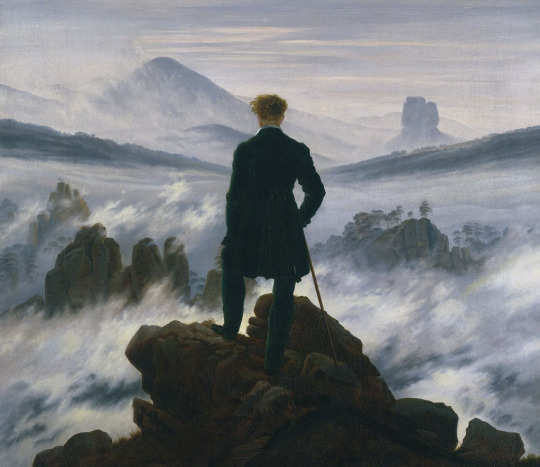
In addition to rebelling against traditional political structures, the Romantics also broke away from the traditional religious teaching, many believing that man found enlightenment not through theology or the bible, but by study and attunement with nature. One of proto-Romantic writer Jean-Jaques Rousseau’s most influential works Emile, or On Education was banned in parts of Europe and even publicly burned due to its ideas on natural religion.
All of this leads to the Romantic pursuit of the sublime. While Enlightenment thinkers would often attempt to remove themselves emotionally from what they were experiencing in order to understand said experience through objective, immutable fact, the Romantics sought emotion, awe, and reverence that transcended rational thought. They celebrated and marveled at the wonders of creation, allowing themselves to be consumed by emotion and experience. These were not stoic people, and its here where One Piece truly begins to shine as a work of Romantic art
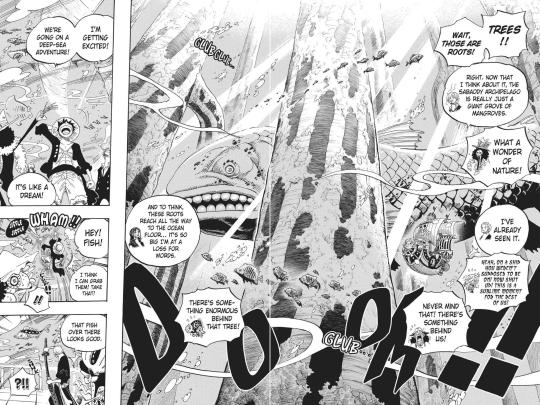
The world of One Piece, particularly once the story gets to the Grand Line, is chalk full of impossible wonder and whimsy. Each island visited along the journey is a feast for the eyes, and Oda’s art does each distinct and incredible location every justice. Luffy has no desire to see the boring or everyday, and he has no qualm in expressing his excitement everywhere he goes. Oda has made the conscious decision never to let the reader look into Luffy’s thoughts via thought bubbles, but the audience is still able to connect with him because they are always aware of what he he is feeling. Every smile takes up half his face, every sadness drawn as a sniveling wreck. Logical ideas are routinely rejected in favor of desired experiences, and Luffy himself rejects the opportunity to hear the answer to the series’s biggest questions because to him, the journey is more important.

It’s important that Luffy’s mindset isn’t all that common, even a world as wild and wacky as One Piece. As the Jaya arc proves, Roger’s execution initially inspired a generation of pirates to go out and follow their dreams, but in the twenty years since his death that ideaolgy has crumbled under the weight of a new wave of dreamless pragmaticism, the same way the Romantic movement gave way to the Realists who followed.
Luffy’s Romantic spirit stands out, even amongst the Straw Hat Pirates. Many of the Straw Hat’s character arcs involve Luffy helping to remove the blocks that prevent them from living out their Romantic ideals. As the series progresses, the crew inches towards embodying that freedom of spirit that Luffy exemplifies. What that looks like for each crewmate is different (Romanticism is highly individualistic, after all) but they’re given the opportunity to live out that ideal because of their association with Luffy.
This theme of freedom of expression and pursuit of dreams follows the Straw Hats wherever they go on both the micro and macro level. The Romantic pursuit of self-determination bleeds over nearly every arc with Luffy at its epicenter, until it comes to a crescendo during the Wano arc, when the true nature of Luffy’s fruit comes to light for the first time.
Luffy is the beating heart of One Piece’s Romanticism. He specifically imbues many of the Romantic ideals of childhood, such as innocence, joy, and being unprejudiced by a corrupting society. He’s uncomplicated yet passionate, without a care in the world for what anyone else thinks about him, and because of that disregard for authority he comes off as equal parts wise and naive.
In Emile, Rousseau lays out his idea of childhood education, which doesn’t include a classroom so much as the child’s interaction with the world, emphasizing the senses and building on the child’s own observations and inferences. The Romantic child was instinctual and in tune with nature, and a character like Luffy growing up on the fringes of society while spending most of his time romping around in the woods would not be out of place (see Mary Robinson’s The Savage of Aveyron, based on the real story of a feral boy that had been found in France).
What makes Luffy different is that he never loses that simplicity of character even as he interacts with an increasingly complex world. Yes, he matures both as a person and a captain, bearing the weight of terrible loss and difficult decisions, but he does it still while maintaining that curious mix of selfish desire to do whatever he wants and selfless sacrifice towards the people he cares about. Luffy doesn’t want to be a hero, but remains uncorrupted by the malevolent social hierarchies that rule One Piece’s world.
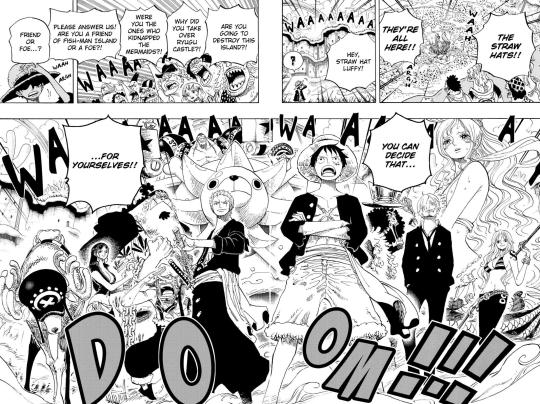
But for all the ways One Piece is a Romantic story, the philosophy of the series departs in several key places. The Romantics of the late 18th and 19th centuries were reacting to the anxieties brought around by the Industrial Revolution and the subsequent urbanization that came along with it, while One Piece belongs squarely to the post-modern era of the 21st. While both glorify a long-gone past, what that past looks like is very different. One Piece fully embraces technology and progress, as best seen during the conflict between Noland and Calgura in the Skypia flashback. While industrialization is sometimes portrayed negatively (see Wano) it’s just as likely to be seen in a positive light (Water 7), and the mysterious civilization of the Void Century was more technologically advanced than the present day manga, not less.
What’s more important than modernization and technological advance is the ways people use said technology. The beautifully rendered locations along the Straw Hat’s journey are just as likely to be vast stretches of wilderness as bustling metropolises, and that search of wonder and the sublime is equally likely to be found in both.
More importantly, I think, is that the Romantics of old were solitary creatures, brooding and isolated from the people around them. There was a preoccupation of creating art devoid of outside influence. The sublime was a deeply personal experience that by its very nature could not be shared with others. Melancholy, loss, solitude, and death were preoccupations of the Romantic mind, the price of visionary genius being social isolation.

One of the most famous Romantic heroes of the 19th century was Thomas Chatterton, a young genius of a poet who, in the midst of poverty and depression killed himself at the age of 17. He was immortalized in paintings and poems, and his influence can be felt to this day by the persistence of the trope of the suffering artist that he, and countless others, helped codify.
One Piece is the story of a boy who rejects the confines of society in search of his own freedom, but he does not do so alone. Luffy is driven as much by the desire to be with his friends as he is by his desire to find the One Piece. The series agrees that risking death is an acceptable part of chasing ones dream, but rejects the notion that it should be sought out or celebrated. It’s better to live an undignified life in the hope of a better tomorrow than to give into an easy death.
And that’s the fascinating part about how philosophies evolve over time, because as much as One Piece borrows from the Romantic era of the 18 and 19th centuries, it isn’t a Romantic story, just as how no amount of research and copying of style could ever turn a historical novel written today into a product of the era its trying to emulate. Oda has taken an old idea and made it into something new, using that idea as the guide for the entire series. Like sun, guiding to the dawn of a new era.
A Romance dawn, if you will.
914 notes
·
View notes
Text
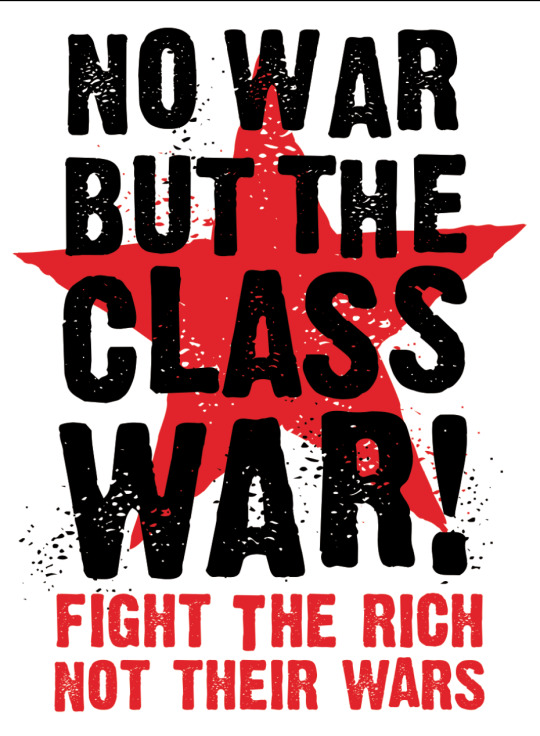
no war but class war.
www.disorder-berlin.de
#class war#no war#anti war#antifa#fuck war#eat the rich#punk shop#berlin kreuzberg#disorder rebel store#klassenkampf#poster#print#posters#punk piosters#punk posters#plakat#plakate#silk screen#siebdruck
10 notes
·
View notes
Photo

2:58 AM EST February 19, 2024:
Black Rebel Motorcycle Club - "Berlin"
From the album Baby 81
(April 27, 2007)
Last song scrobbled from iTunes at Last.fm
2 notes
·
View notes
Text
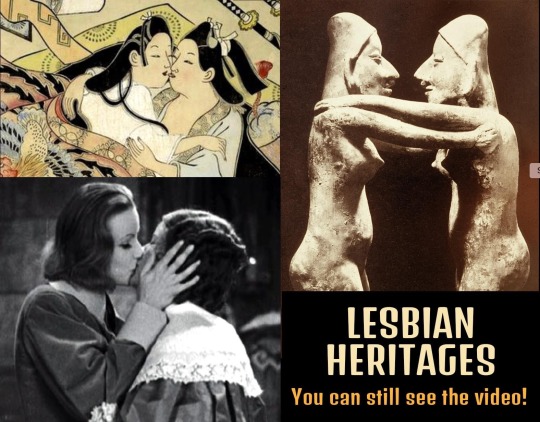
If you missed the Lesbian Heritages show, you can still see it stream on demand til April 15. Just register and Max Dashu will send you the link.
Regular $20: https://py.pl/1zNJJD
Supporter $25: https://py.pl/1H2wsh
Low-Income: $15: https://py.pl/wkOhd
Lesbian Heritages
International view of woman-loving women, from archaeological finds of paired and embracing women, up to recent history. Khotylevo, Çatal Hüyük, Mycenae, Nayarit, Etruria, Nok, and the Begram ivories. Lesbian love in Hellenistic art, Thai murals, Indian temple carvings, and Japanese erotic books. Some called us mati, zami, hwame, sakhiyani, bofe or sapatão. Lesbians as female rebels: the Amazons, Izumo no Okuni, Juana Asbaje, Louise Michel, Stormé DeLarverie. Women who passed as men in order to practice medicine and roam the world. Punishing the lesbian: in the Bible, Zend Avesta, Laws of Manu; and demonological fantasies. Lesbian musicians (Sotiria Bellou, Chavela Vargas, Ethyl Waters), artists (Edmonia Lewis, Romaine Brooks, Yan María Castro), writers (Emily Dickinson), and actors (Garbo!) Lesbian clubs and scenes in Paris, Berlin, and New York. Lesbian feminists, and Arab, South African, Australian lesbians. And more…
"I am a lesbian, I am reality; I insist on living in freedom: --Rebeldías Lesbicas, Peru
144 notes
·
View notes
Text
Rewind the Tape —Episode 1
Art of the episode
During our rewatch, we took note of the art shown and mentioned in the pilot, and we wanted to share. Did we miss any? Do you have any thoughts about how these references could be interpreted? How do you think Armand and Louis go about picking the art for their penthouse in Dubai?

The Fall of the Rebel Angels
Peter Bruegel the Elder, 1562
This painting is featured in the Interview with the Vampire book, and it was important enough to be included in the draft pilot script!

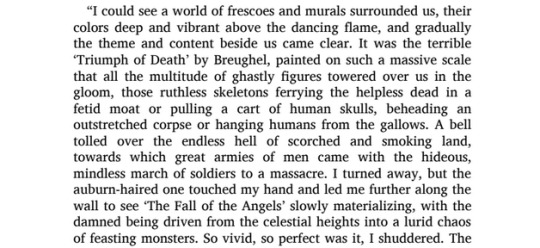
Bruegel the Elder was among the most significant Dutch and Flemish Renaissance artists. He was a painter and print-maker, known for his landscapes and peasant scenes.

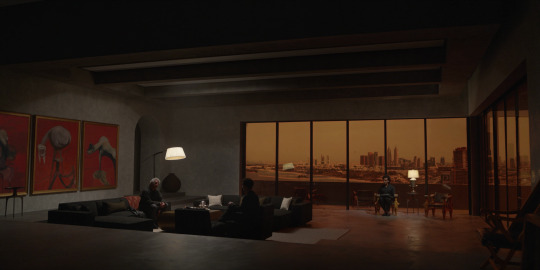

Three Studies for Figures at the Base of a Crucifixion
Francis Bacon, 1944
Bacon was an Irish figurative painter, known for his raw, unsettling imagery and a number of triptychs and diptychs among his work. At a time when being gay was a criminal offense, Bacon was open about his sexuality, and was cast out by his family at 16 for this reason. He destroyed many of his early works, but about 590 still survive.
The Tate, where these paintings are displayed, says this about the work: "Francis Bacon titled this work after the figures often featured in Christian paintings witnessing the death of Jesus. But he said the creatures represented the avenging Furies from Greek mythology. The Furies punish those who go against the natural order. In Aeschylus’s tragedy The Eumenides, for example, they pursue a man who has murdered his mother. Bacon first exhibited this painting in April 1945, towards the end of the Second World War. For some, it reflects the horror of the war and the Holocaust in a world lacking guiding principles."


Strawberries and Cream
Raphaelle Peale, 1816
Peale is considered to have been the first professional American painter of still-life. [Identified by @diasdelfuego.]

Outfits inspired by J.C. Leyendecker
Leyendecker was one of the most prominent and commercially successful freelance artists in the U.S. He studied in France, and was a pioneer of the Art Deco illustration.
Leyendecker's model, Charles Beach, was also his lover of five decades. You can read costume designer Carol Cutshall's thoughts on these outfits on her Instagram.
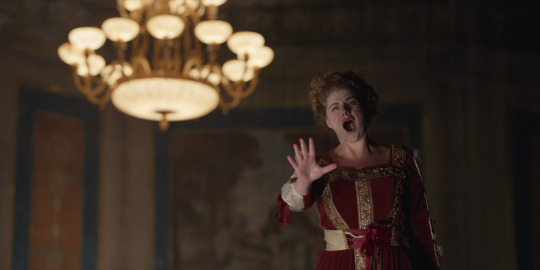
Iolanta
Pyotr Tchaikovsky, 1892
The opera Louis and Lestat go to was composed by Tchaikovsky, another gay artist. The play tells a story "in which love prevails, light shines for all, lies are no longer necessary and no one must fear punishment," as put by Susanne Stähr for the Berliner Philharmoniker.

On the Hunt or Captain Percy Williams On A Favorite Irish Hunter
Samuel Sidney, 1881
The unidentified painting on the right might be from the same hunting series, though we couldn't identify the exact one. There's also a taxidermy deer, ram, and piebald deer on the wall. [Identified by @vfevermillion.]

The Artist's Sister, Melanie
Egon Schiele, 1908
Schiele was an Austrian expressionist painter and protege of Gustav Klimt. Many of his portraits (self portraits and of others) were described as grotesque and disturbing. [Identified by @dwreader.]
A Stag at Sharkey's
George Wesley Bellows, 1909
Bellows was an American realist painter, known for his bold depictions of urban life in New York City. [Identified by @vfevermillion.]

Mildred-O Hat
Robert Henri, undated (likely 1890s)
Henri was an American painter who studied in Paris, where he learned from the Impressionists and determined to lead an even more dramatic revolt against American academic art. [Identified by @nicodelenfent, here.]
Starry night
Edvard Munch, 1893
Munch was a Norwegian painter, one of the best known figures of late 19th-century Symbolism and a great influence in German Expressionism in the early 20th century. His work dealt with psychological themes, and he personally struggled with mental illness. [Identified by @vfevermillion.]
If you spot or put a name to any other references, let us know if you'd like us to add them with credit to the post!
Starting tonight, we will be rewatching and discussing Episode 2, ...After the Phantoms of Your Former Self. We hope to see you there!
And, if you're just getting caught up, learn all about our group rewatch here ►
#louis de pointe du lac#daniel molloy#lestat de lioncourt#vampterview#interview with the vampire#iwtv#amc interview with the vampire#interview with the vampire amc#amc iwtv#iwtv amc#IWTVfanevents#rewind the tape#in throes of increasing wonder#analysis and meta#art of the episode
66 notes
·
View notes
Text
The Glamour Boys
Forgotten queer history: the Glamour Boys were a group of gay British politicians in the 1930s. Because they made trips to Berlin, which was then one of the most sexually liberal and liberated places in Europe (note especially Magnus Hirschfeld’s Sexology Institute), they were among the first to notice the warning signs of Germany’s descent into fascism.
They returned to the UK and argued loudly and without stopping for rearmament, against appeasement, and many of the enlisted and were killed in action during World War II.
The term “Glamour Boys” was a derogatory one given to them by Neville Chamberlain, the conservative Prime Minister best known for his failed appeasement of Hitler. He had the Glamour Boys harassed, their phones tapped, and their names slandered in the press. As gay public figures in a time and place where homosexuality was illegal, each faced great potential consequences by coming forward as they did.
Members include the following MPs: Robert Bernays, Ronald Cartland, Victor Cazalet, John Macnamara, and Anthony Muirhead.
Their story was largely untold until The Glamour Boys: The Secret Story of the Rebels who Fought for Britain to Defeat Hitler (2010) by Chris Bryant.
"Churchill gets all the credit all the time because that's what he wrote. He was opposed to the policy of appeasement, and all the rest of it, but what nobody, I guess, would know is that half the time when Churchill and [Anthony] Eden were plotting with the rebels, roughly half the men in the room were 'queer'."
#history#world history#19th century#gay history#queer history#wwii#British history#Nazi#homophobia#war#glamour boys
268 notes
·
View notes
